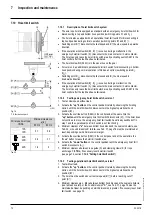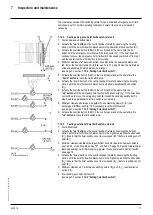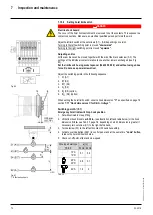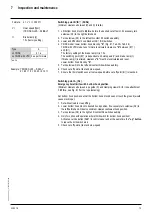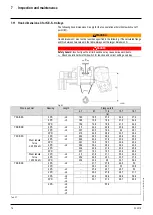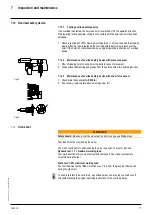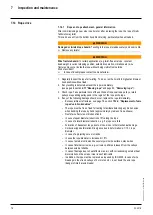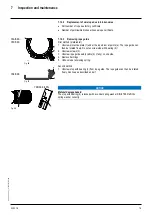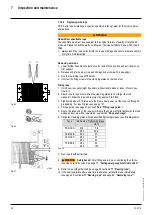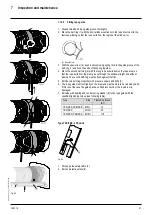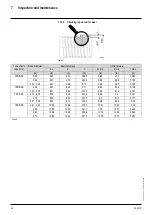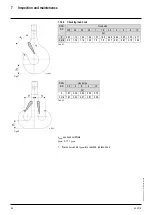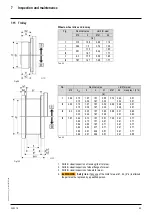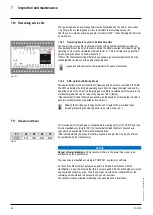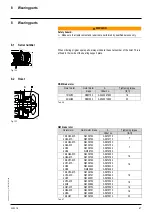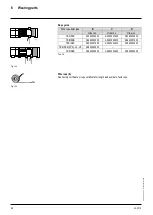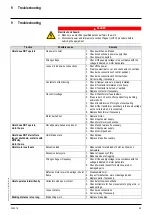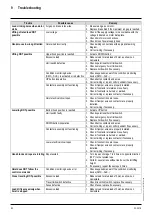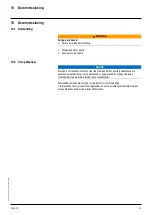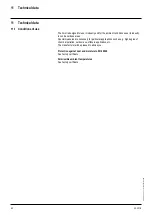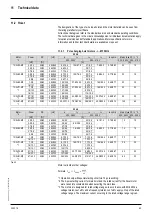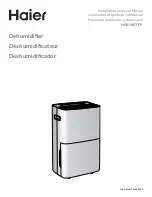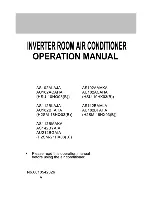
7
Inspection and maintenance
78
03.2018
ba
-o
.2
.6
.0
-us
-1.
1-
y
|
A
11
86
75
01
R
ev
A
A
7.14
Rope drive
7.14.1
Rope and rope attachment - general information
After commissioning a new wire rope hoist, or after replacing the rope, the rope of multi-
fall hoists may twist.
This can be seen from the bottom hook block turning, particularly when unloaded.
WARNING
Damaged or twisted rope hazard.
Twisting in the rope prejudices safety and service life.
➢
Remove any twists!
WARNING
Wire fracture hazard.
In certain applications (e.g. twist-free wire rope, constant
deadweight, recurrent stopping position, automatic operation, vibrations etc.) wire
fractures may occur inside the rope without being visible from outside.
Risk of accident!
➢
In case of doubt please contact the manufacturer.
1.
Regularly inspect the rope for twisting. To do so, run the hoist into highest and lowest
hook positions without load.
2.
If any twisting is detected, untwist the rope immediately
(see page 48, section
4.11
“Reeving rope”
and page 80,
“Removing rope”
).
3.
Check rope. Take particular note of the sections of rope near rope pulleys, return
pulleys or equalizing pulleys and in the region of the rope anchorage.
4.
If any of the following damage should occur, replace the rope immediately.
–
Excess visible wire fractures, see page 79, section
“Replacement of wire
rope due to broken wires”
.
–
The rope must be free of load for testing to facilitate detecting any broken wires
when bending the rope by hand (approximately by radius of rope sheave).
–
Nest of wire fractures or broken strand.
–
In case of equal diameter reduction of 5% along the rope
–
In case of a local diameter reduction, e.g. if a rope core fails
–
Formation of baskets or loops, knots, kinks, kink or other mechanical damage.
–
Corkscrew-
type deformation. Divergence due to deformation: ≥
1/10 × rope
diameter.
–
In case of a projecting core or strands
–
In case the rope diameter is increased >=5%
–
In case of external corrosion like severely worn wire surfaces, slack wires
–
In case of internal corrosion, e.g. corrosion particles released from the valleys
between external strands
–
In case of damage due to heat effects or an arc with corresponding external heat
discoloration on the wires or clear loss of lubricants
–
In addition, the rope must be replaced as required by ISO 4309. In case of wire
breakage in the strand valleys of 2 or more on 6 × d, set down the wire rope
(danger of internal wire breaks)







